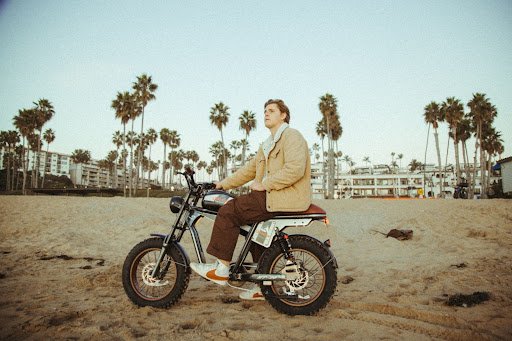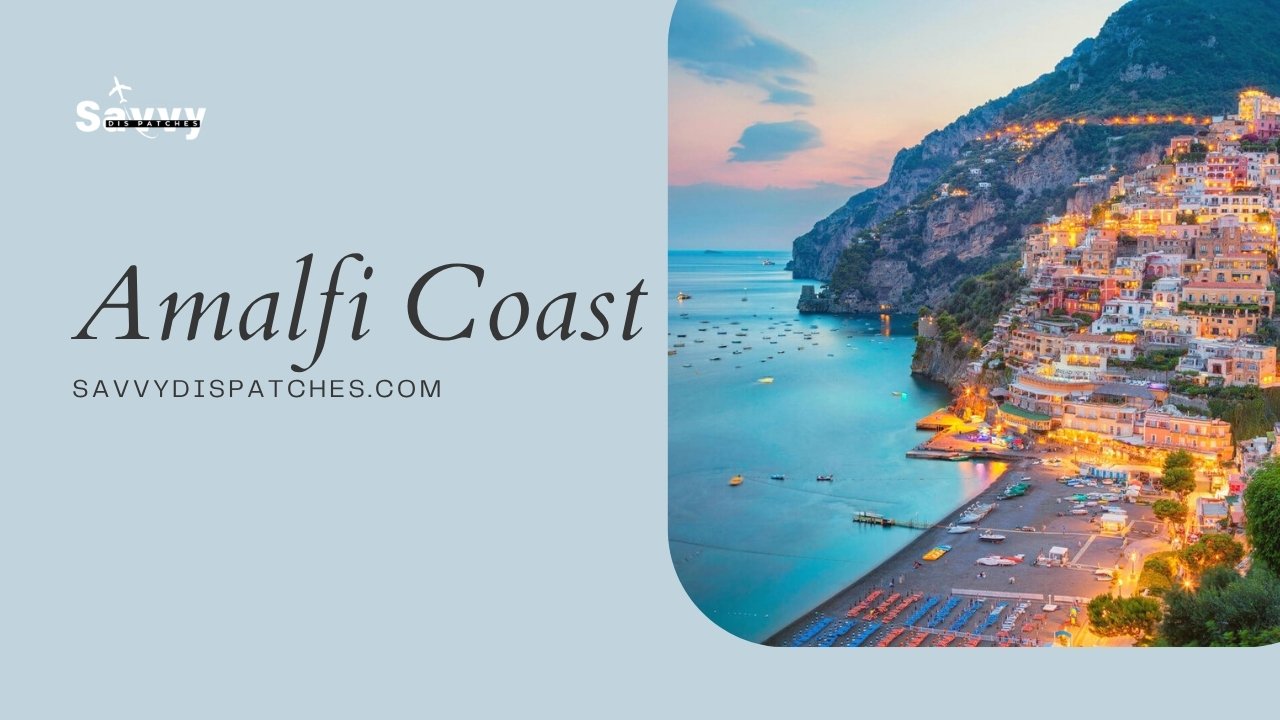Travel
Lumbini: The Spiritual Heart of Buddhist Heritage

Nestled in the quiet plains of southern Nepal, Lumbini is regarded as Siddhartha Gautama’s birthplace—better known as Buddha. For millennia, it has attracted pilgrims, archaeologists, and spiritual seekers—a UNESCO World Heritage Site. Lumbini is a pillar of world’s religious and cultural legacy because of its rich past, calm surroundings, and spiritual relevance.
The Origins of Lumbini
Lumbini’s historical importance began in the sixth century BCE when Queen Maya Devi delivered Prince Siddhartha into this hallowed forest. Its validity is reinforced by the chronicles of Emperor Ashoka, who visited Lumbini in about 249 BCE. He built the well-known Ashokan Pillar, still standing today, to honour the place.
Archaeological proof supporting the site’s holiness still includes old inscriptions and traces of monasteries. Lumbini thereby stays a broken link between the time of Buddha and his teachings.
The Maya Devi Temple: A Sacred Landmark
The Maya Devi Temple forms Lumbini’s spiritual center. Dedicated to Buddha’s mother, Queen Maya Devi, this temple protects the precise birth site of Siddhartha. Inside, bas-relief sculptures and a marker stone chronicle the miracle birth of Buddha.
Enclosed in rich grounds and historic ruins, the shrine radiates peace. The mystical atmosphere is enhanced by nearby the Sacred Pond, thought to be Maya Devi’s bathing place before delivery.
The Ashokan Pillar: A Testament to History
Rising high among the rich Lumbini Park, the Ashokan Pillar represents Emperor Ashoka’s respect of Buddhism. Brahmi script-inscribed sandstone column proves Lumbini as Buddha’s birthplace.
Along with pilgrims, the pillar draws history buffs anxious to view this ancient remnant of India’s Mauryan Empire.
Monastic Zone: A Global Pilgrimage Destination
Two sections— Eastern and Western Monasteries—representing Theravada and Mahayana traditions respectively, separate the Monastic Zone at Lumbini. Supported by different countries, these monasteries highlight several architectural designs and Buddhist doctrines.
Every monastery presents a peaceful haven for learning, introspection, and meditation. The calm surroundings, where old knowledge merges naturally with modern spirituality, often bring comfort to visitors.
The Sacred Garden: A Place of Peace
Lumbini’s centre is the Sacred Garden, a painstakingly maintained area including the Ashokan Pillar, the Maya Devi Temple, and a number of historic stupas. The area is so peaceful that it would be perfect for meditation and silent contemplation.
Often gathering here to pay respect, worship, and fully experience the spiritual energy permeating the environment are pilgrims.
Buddhist Circuit: A Journey Through History
A major component of the Buddhist Circuit, Lumbini links important locations connected to the life of the Buddha. Along with Lumbini, the circuit runs Bodh Gaya (enlightenment), Sarnath (first sermon), and Kushinagar (nirvana).
Travelers and pilgrims use this path to follow Buddha’s footsteps and learn about his travels and lessons. Starting point, Lumbini has unmatched importance on this spiritual journey.
Flora and Fauna of Lumbini
Lumbini boasts great biodiversity outside its historical and spiritual appeal. For birdwatchers and other environmentalists, the Lumbini Crane Sanctuary and World Peace Pagoda region is paradise.
Among rare species, these wetlands provide a haven for the Sarus Crane. Many visitors find great wonder at how peacefully faith and nature coexist on this holy ground.
UNESCO Recognition: Preserving Lumbini’s Legacy
Lumbini came on the UNESCO World Heritage list in 1997. This awareness emphasizes its worldwide historical and cultural relevance. Supported by foreign organizations, conservation initiatives guarantee that Lumbini’s legacy stays whole for the next generations.
From keeping ecological balance to rebuilding historic stupas, these initiatives protect Lumbini’s holy aura.
The Role of Meditation in Lumbini
Lumbini’s spiritual life revolves especially around meditation. There are several meditation facilities inside the Monastic Zone with courses and retreats. Under the direction of seasoned professionals, these workshops give guests a chance to explore mindfulness and re-establish personal connection.
Lumbini is a sought-after site for spiritual renewal since the calm surroundings improve the contemplative experience.
Festivals Celebrated in Lumbini
Most often observed in Lumbini, Buddha Jayanti honours the birth, enlightenment, and death of Buddha. Celebrated yearly on May’s full moon day, the events gather thousands of pilgrims.
Devotely and joyfully filling the air are processions, rites, and cultural events. The celebration uniting people from many backgrounds highlights Lumbini’s spiritual and cultural vitality.
The Global Appeal of Lumbini
Lumbini draws guests from all walks of life and appeals beyond religious bounds. Its universal resonance is in harmony, serenity, and compassion.
From monks to backpackers, the variety of guests provides a unique cultural mosaic reflecting Lumbini’s function as a worldwide spiritual centre.
Sustainable Tourism in Lumbini
Lumbini’s sustainability has taken the front stage as travel increases. Eco-friendly projects meant to reduce environmental effects include trash management programs and solar power plants.
Local people actively support these initiatives to ensure tourism helps locals and visitors.
Culinary Experiences in Lumbini
Lumbini experience gains a taste dimension from traditional Nepali food. Local treats abound to satisfy guests: dal bhat, momo, and sel roti.
Serving Buddhist pilgrims’ tastes, restaurants close to the Monastic Zone sometimes provide vegetarian cuisine. The focus on a basic, healthy diet accentuates the spiritual trip.
Art and Craft in Lumbini
The birthplace of Buddha is home to many handcrafted items influenced by Buddhist ideas. Popular souvenirs are complex Thangka paintings, prayer banners, and Buddha statues.
These crafts not only showcase regional talent but also help artists, therefore promoting sustainable living in the area.
Transportation to Lumbini
Convenient access to Lumbini comes from road, rail, and air choices. Gautam Buddha International Airport at Bhairahawa, the closest city, links the Birthplace of Buddha to the main centres.
Local transportation provides a green approach to see the site including electric cars and cycle rickshaws.
Lumbini’s Connection to Global Buddhism
Lumbini’s importance goes beyond Nepal to affect Buddhist groups all across. Lumbini is visited by international delegations often to foster peace and deepen relations.
The worldwide acceptance of the Sacred Garden emphasizes its function as a uniting agent in Buddhist society.
Challenges and Preservation Efforts
Sacred Garden struggles with urbanization and climate change among other things. Under the direction by UNESCO and local authorities, preservation initiatives centre on maintaining the cultural and biological integrity of the site.
Cooperative projects seek to balance growth and preservation so that Sacred Garden will continue to be a spiritual lighthouse for the next generations.
Inspirational Stories from Lumbini
Many times, guests of Sacred Garden report life-changing events. Personal development, healing, and spiritual awakening narratives emphasize the great influence of this holy spot.
These stories motivate others to start their own road to Lumbini, therefore generating a positive and hopeful ripple effect.
Educational Opportunities in Lumbini
Educational courses targeted at Buddhism, archaeology, and heritage preservation are provided by the Lumbini Buddhist University and other study centres.
Preserving and spreading knowledge about Sacred Garden and its cultural legacy depends much on these establishments.
Future Prospects for Lumbini
With continuous efforts to improve infrastructure, encourage sustainable tourism, and promote world harmony, Sacred Garden has a bright future. Virtual reality and other emerging technologies might soon let more people virtually enjoy Lumbini’s beauties.
Lumbini’s ageless lesson inspires people today by linking the past, present, and future.
Destinations
Madeira Travel Guide: Top Attractions, Hidden Gems & Local Tips
Destinations
Amalfi Coast Travel Guide: A Journey for Every Type of Traveler
Travel
How to Choose the Best Fat Tire Electric Bike for Different Terrains

How to Choose the Best Fat Tire Electric Bike for Different Terrains
Choosing the best fat tire electric bike for your terrain isn’t just about looks—it’s about performance and comfort. The right e-bike depends on where you ride: smooth pavement, rocky trails, sandy beaches, or snowy roads. Each surface demands specific tires, suspension, and motor power.
This guide will walk you through how to pick the perfect fat tire e-bike for every type of terrain.
What Makes Fat Tire Electric Bikes Unique?
Fat tire electric bikes stand out because of their oversized tires—usually 4” to 5” wide—that offer better traction and stability. Whether it’s a moped-style electric bike for city cruising or a rugged off-road model, these bikes handle diverse terrains with ease.
Key Advantages:
- Excellent grip on loose or slippery surfaces
- Smoother ride on uneven terrain
- Better balance for new riders
- Support for heavier loads or cargo setups
Most fat tire e-bikes feature 500W to 1000W motors and ≥80 Nm torque, making them ideal for both hills and flat roads.
1. Best Fat Tire Electric Bike for City Streets
If you’re riding mostly on asphalt, paved trails, or urban bike lanes, comfort and efficiency matter most.
What to Look For:
- Tire Type: Semi-slick or hybrid tread (4.0”) for low rolling resistance.
- Motor Power: 500–750W hub motor for smooth acceleration.
- Battery Range: At least 48V 15Ah (40–50 miles per charge).
- Suspension: Front fork only—light and efficient for city use.
- Frame Style: Step-thru or moped-style electric bike for easy mounting.
Example setup:
A 750W fat tire commuter e-bike with 20″x4″ semi-slick tires offers great traction without draining power on smooth roads.
Pro Tip: Inflate your tires to 20–25 PSI for better efficiency and speed on pavement.
2. Best Fat Tire Electric Bike for Mountain Trails
Mountain terrain demands more power, stronger frames, and better suspension.
What to Look For:
- Motor: 750W–1000W mid-drive motor with ≥80 Nm torque for hill climbing.
- Suspension: Full suspension (front + rear) to absorb shocks.
- Tires: Deep tread 4.8” tires for traction on gravel and mud.
- Brakes: Hydraulic disc brakes (180mm rotors) for steep descents.
- Battery: 48V 20Ah or dual-battery setup for long trail rides.
- Ideal PSI: 12–18 PSI for rocky trails.
Pro Tip: A mid-drive motor keeps your center of gravity low and improves handling on tight, winding paths.
3. Best Fat Tire Electric Bike for Snowy Conditions
Snow requires traction and stability—this is where fat tire e-bikes truly shine.
What to Look For:
- Motor: 750–1000W rear hub motor (torque ≥85 Nm).
- Tires: 4.8” studded or knobby tires for maximum grip.
- Frame Material: Aluminum alloy to prevent rust.
- Battery: High-capacity 48V 17–20Ah (cold weather drains battery faster).
- Fenders: Full coverage to block slush and debris.
Pro Tip: Keep your battery warm indoors before riding—it maintains up to 15% more charge efficiency in winter.
4. Best Fat Tire Electric Bike for Beach or Sand Riding
Soft sand is tricky. You’ll need wide tires, a strong motor, and corrosion resistance.
What to Look For:
- Tires: Ultra-wide 4.5–5.0” tires with low PSI (8–12 PSI).
- Motor: 750W or 1000W rear hub motor for consistent power.
- Battery: 48V 15Ah minimum—sand adds resistance.
- Frame Coating: Anti-rust treatment or aluminum alloy frame.
- Drivetrain: Sealed components to protect from sand and salt.
Pro Tip: After beach rides, rinse your e-bike with fresh water and dry it thoroughly to avoid corrosion.
Comparison Table: Fat Tire E-Bike Terrain Guide
| Terrain Type | Ideal Tire Width | Motor Power | Suspension | Battery | Recommended PSI |
| City Streets | 4.0″ semi-slick | 500–750W | Front | 48V 15Ah | 20–25 PSI |
| Mountain Trails | 4.8″ knobby | 750–1000W | Full | 48V 20Ah+ | 12–18 PSI |
| Snow | 4.8″ studded | 750–1000W | Front | 48V 17Ah+ | 10–15 PSI |
| Beach/Sand | 4.5–5.0″ | 750–1000W | Front | 48V 15Ah+ | 8–12 PSI |
Extra Features Worth Considering
- Pedal Assist Levels: Choose models with at least 5 PAS modes for flexibility.
- Display: An LCD with real-time speed, range, and PAS data helps monitor performance.
- Lighting: Integrated LED lights improve safety for night rides.
- Accessories: Racks, baskets, or child seats can make your ride more functional.
Tips for Beginners vs. Advanced Riders
For Beginners:
- Start with a step-thru frame for easy handling.
- Use pedal assist mode to extend battery life.
- Keep tires at higher PSI for smoother roads.
For Advanced Riders:
- Go for dual batteries if you ride long distances.
- Experiment with lower PSI on dirt or snow for more grip.
- Upgrade to hydraulic brakes for precision control.
Conclusion
The best fat tire electric bike depends on where you ride most. City commuters should look for semi-slick tires and moderate power, while mountain and beach riders need wider tires, stronger motors, and solid suspension. By matching your bike’s setup to your terrain, you’ll enjoy smoother rides, longer range, and better control.

 Blog10 months ago
Blog10 months agoHow to Deal with Scabies While Traveling

 Travel10 months ago
Travel10 months agoRichmond, Virginia Street Art Guide

 Travel10 months ago
Travel10 months agoPerhentian Islands: How to Get There, What to Expect, & More

 Travel10 months ago
Travel10 months agoHow to Live in Your Car in New Zealand

 Travel10 months ago
Travel10 months agoSouvenir in Nepal: A Guide to Unique Handicrafts and Cultural Treasures

 Travel10 months ago
Travel10 months agoVegan Guide to Dining Out in Richmond, Virginia

 Food10 months ago
Food10 months agoVegetarian Food Nepal: A Journey into Flavorful Plant-Based Cuisine

 Travel7 months ago
Travel7 months agoA Local’s Guide to Sanibel Island, Florida

















